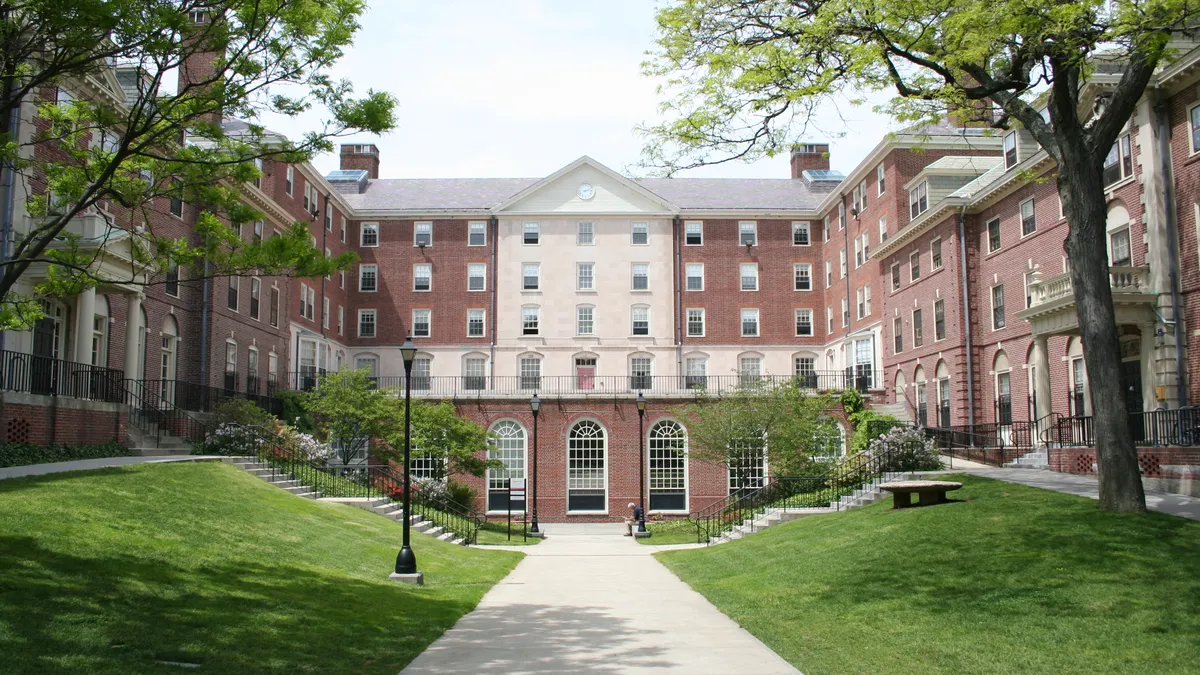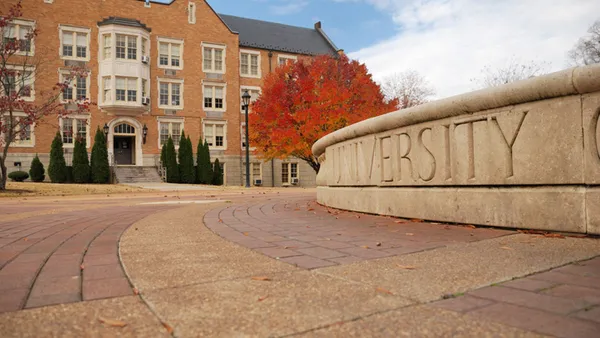Dive Brief:
-
Inflation-adjusted wages for full-time faculty dropped in this academic year for the first time since 2011-12, declining by 0.4%, according to the American Association of University Professors' annual survey.
-
The group polled 929 colleges, which provided employment data for roughly 380,000 full-time faculty members. The report does not include current-year data on part-time faculty members.
-
The survey shows how pandemic-related belt-tightening across higher education is affecting its workforce, which has suffered from widespread job cuts, salary freezes and benefit losses over the past year.
Dive Insight:
AAUP's findings shed light on how faculty compensation is being used to absorb cuts at universities. Nearly 60% of surveyed institutions said they froze or reduced salaries, around 30% eliminated or cut fringe benefits, and almost 10% furloughed at least some faculty.
Many colleges took other actions to reduce personnel costs, such as implementing early-retirement programs for tenure-line faculty and modifying the time it takes to earn tenure, the poll found.
Associate degree-granting institutions without faculty ranking systems saw the largest declines in wages when adjusted for inflation, falling by 4.1%. Meanwhile, wages fell 1.3% at baccalaureate institutions and 0.8% at doctoral institutions and 0.6% at master's institutions.
Faculty wage trends also varied across the country. Without adjusting for inflation, all regions of the U.S. saw faculty compensation grow by less than 2%, except for the eight-state Mountain region — which includes Arizona, Utah and New Mexico — where average salaries fell 2.1%, according to a Higher Ed Dive analysis of AAUP's data.

While the number of full-time faculty members didn't change much from last year, only doctoral institutions reported overall increases. Associate institutions saw the largest declines, with 3.1% fewer full-time faculty members compared to last year.

Other reports paint a dismal outlook for faculty members as a result of the pandemic. All types of faculty jobs had losses this year, though adjuncts were hit hardest, according to annual data from the College and University of Professional Association for Human Resources.
Overall, the higher ed sector shed 650,000 jobs, or about 13% of its workforce, between February and December of 2020, according to an analysis of government data from The Chronicle of Higher Education. The cuts are far more pronounced than they were during the Great Recession.















